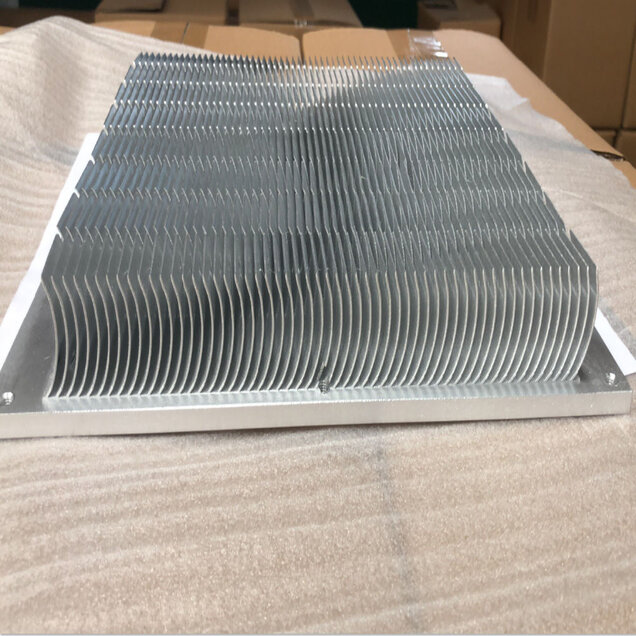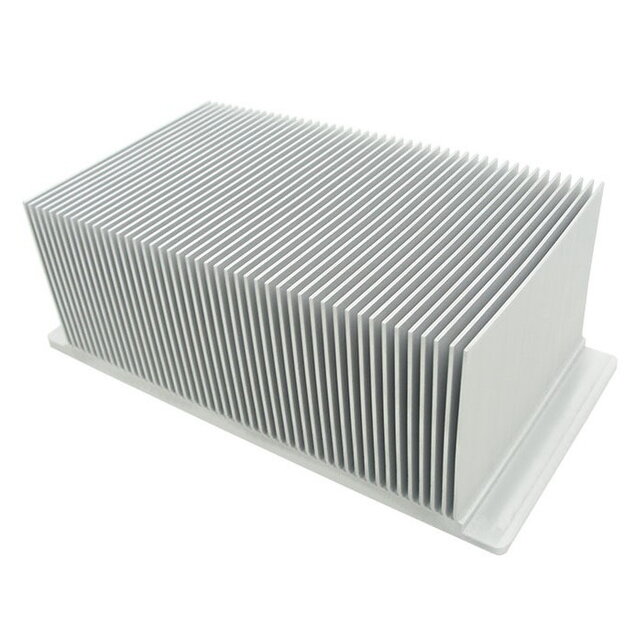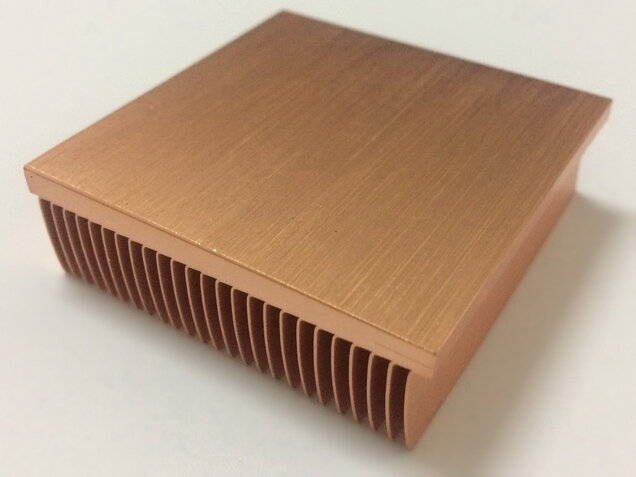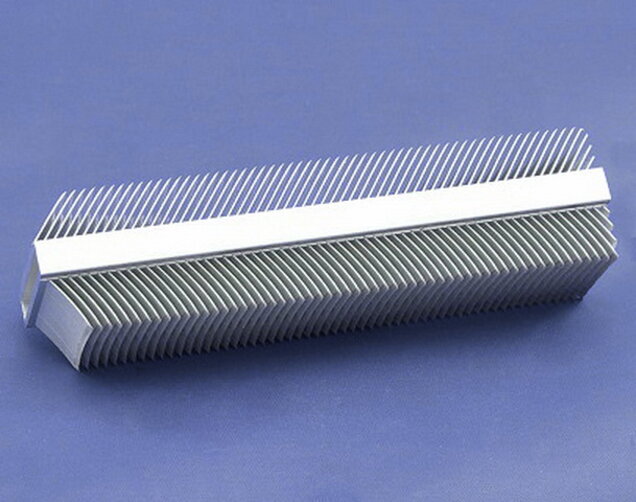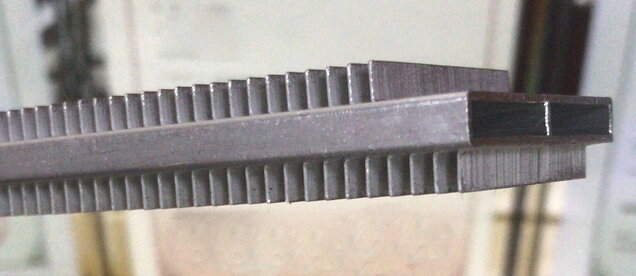Skived heat sink is a cost effective solution when considering the low tooling cost and the optimised fin surface area
This method of creating heat sinks becomes increasingly more popular. It guarantees the best performance and a low production cost.
Skived heat sink will be more widely used, skived fin process can also cooperate with other cooling process in production, such as the heat pipe technology, also can match the water cooled heat sink process, micro channel and so on.
According to the characteristics demanded, it is possible to produce skived fin heat sinks in different shapes and sizes, with an improved heat sink performance, at the same time with reduced cost. Skiving operation has requirements for the used material who are not high.
Applications of Heat Sinks Produced with Skiving
Skived heat sinks have vast applications.
They can allow maximum dissipation of heat in a very limited space as they have a very large surface area to volume ratio due to large packing density.
Applications of Skived Heat Sinks
Skived Heat Sinks are used in various applications, from computers and telecommunications equipment to automotive and aerospace systems. Some specific applications include:
- Computer Systems: Skived Heatsinks are commonly used in laptop and desktop computers to cool the central processing unit (CPU) and graphics processing unit (GPU). They can also be used in data centers to cool the servers.
- Telecommunications Equipment: Skived Heatsinks are used in telecommunications equipment to cool the power amplifiers and transistors.
- Automotive Systems: Skived Heatsinks are used in automotive systems to cool the engine control unit (ECU), alternators, and other electronic components.
- Aerospace Systems: Skived Heatsinks are used in aircraft and space systems to cool the various components, including power supplies. Skived Heat Sinks also allow for increased airflow and more excellent aerodynamics.
- Industrial Equipment: Skived Heat Sinks are commonly used to cool electronic components. Some applications include cooling the power amplifiers and transistors in telecommunications equipment, the engine control unit (ECU), alternators, other electronic components in automotive systems, and power supplies in aerospace systems.
- Power Supplies: Skived heatsinks are often used in power supplies to help keep up with the ever-increasing demand for diverse power needs.
- LED Lighting: Skived Heatsinks are commonly used to dissipate the heat generated by LEDs, which is known for being a significant temperature problem. Skiving also aids in heat dissipation in LED lights by providing more surface area for airflow to pass over. Skiving also provides improved thermal performance when compared to traditional heatsinks because it connects the fins with any venting holes that may be present on the device. Skived Heat Sinks are also smaller and lighter than traditional heatsinks, making them ideal for use with small electronics.
- Medical Equipment: Skived Heat Sinks are used in medical equipment to cool the electronic components. They are also used in medical lasers to cool the diode. Skived Heat Sinks can also be used in medical monitors, scanners, and other diagnostic equipment to cool the electronic components.
For heatsink manufacturers who desire the most efficient thermal transfer mechanism in the least amount of space, it is often quite advantageous to employ skived fin technology in the production process. Many have already discovered how this fin skiving technology can turn out to be the most affordable - and reliable - method of producing heatsinks as needed for their specific applications.
Crafted out of a single block of metal - whether it be copper, aluminum or some alternative material - skiving is generally used to produce a heatsink with a series of very fine thins that all have the same shape and size. In order to make the right cuts, there are specially designed blades and tools that must be used to ensure fine thin uniformity. In addition, the heatsink manufacturer must use a precise technique to successfully shave the metal out from its initial block. Furthermore, they are closely grouped together in a pattern that inherently optimizes the level of surface area that is achieved, while admitting ample airflow for cooling.
The best applications of this type of heatsink are found in components that house limited space and that exhibit high levels of ventilation. When considering how to optimize surface area it is worth noting that skived find technology provides a more inexpensive way of attaining much the same results as folding and extrusions.
The advantages of this technology are quite apparent; when trying to cut costs it is worth noting that product quality is not sacrificed. In fact, skived fin technology is one of the best ways to enhance thermal conductivity between the heatsink's base and fins. That's because both are carved out from the same material, providing seamless contiguity among the parts. Other heatsink design methods, however, often rely on fixtures between the base and its fins so that spacing is prone to occur and thus cause a greater loss of the heatsink's thermal transfer capability.

